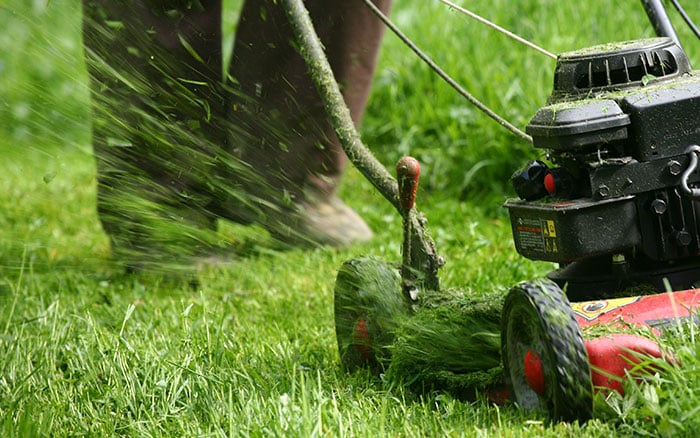We are all familiar with the sweet scent of cut grass in the spring and summer. It is many people’s favourite scent in the UK, with 37& of those in a poll choosing it as number one. But what causes that familiar, popular natural perfume?
Why does grass smell the way it does?
There have been many scientific studies conducted regarding the smell of freshly cut grass. These investigations have provided us with an answer, and that answer is GLVs.

What are GLVs?
According to the results of scientific observations, the smell produced by damaged grass is a mixture of a few things. These are oxygenated hydrocarbons, which include ethanol, methanol, acetaldehyde, and acetone.
A much simpler name for this collection of chemicals is ‘green leaf volatiles’, more simply called GLVs.
This smell and release of these chemicals is no accident. The plant does it on purpose! It acts as a warning and a signal to nearby plants and insects.
And it isn’t just grass that releases GLVs when damaged. Most plants contain trace amounts, but we notice grass the most because we cut it in large quantities.
Why does grass release a warning?
Much like other plants, the grass is trying to protect itself, and neighbouring plants. When studying the effects of damage on tobacco leaves, scientists were able to figure out what could trigger GLVs.
When tobacco leaves were damaged and rubbed with saliva from insects, volatile compounds were released.
This same result wasn’t found when instead poking and prodding at the leaves or brushing them with water.
Further studies of tobacco leaves found that specific perfumes were released when being grazed by caterpillars.
This signal is thought to be intentional. The specific scent produced when grazed by caterpillars attracts other insects nearby that feed on caterpillars!
So, plants can concoct specific cocktails of scents, depending on what is happening to them. This could be any damage from being moved, risk of infection, or being nibbled at.
These GLV scents are so clever with how they communicate. And nearby plants can respond! When GLVs suggest that nearby plants are losing their flowering heads, plants will work to protect themselves. They do this by moving sugar and other resources away from their flowers, and toward their roots. This gives the plant a better chance of recovery.

Why do we enjoy the smell of cut grass?

There isn’t any specific scientific element of the smell of grass that makes us enjoy it more. The real reason that we love it, is just association!
We are exposed to the scent of freshly cut grass quite regularly, particularly on sunny days in the spring and summer.
By mowing grass, we cut a great volume of it all at once, injuring a lot of plant tissues.
This means that a huge, concentrated cloud of GLVs is released all at once. This scent has become familiar and recognisable.
Simply because the scent tends to be most found on lovely weather days and weekends, we associate it with joy.
So, enjoy the outdoors and the fresh and relaxing smell of freshly cut grass this summer.

Leave A Comment